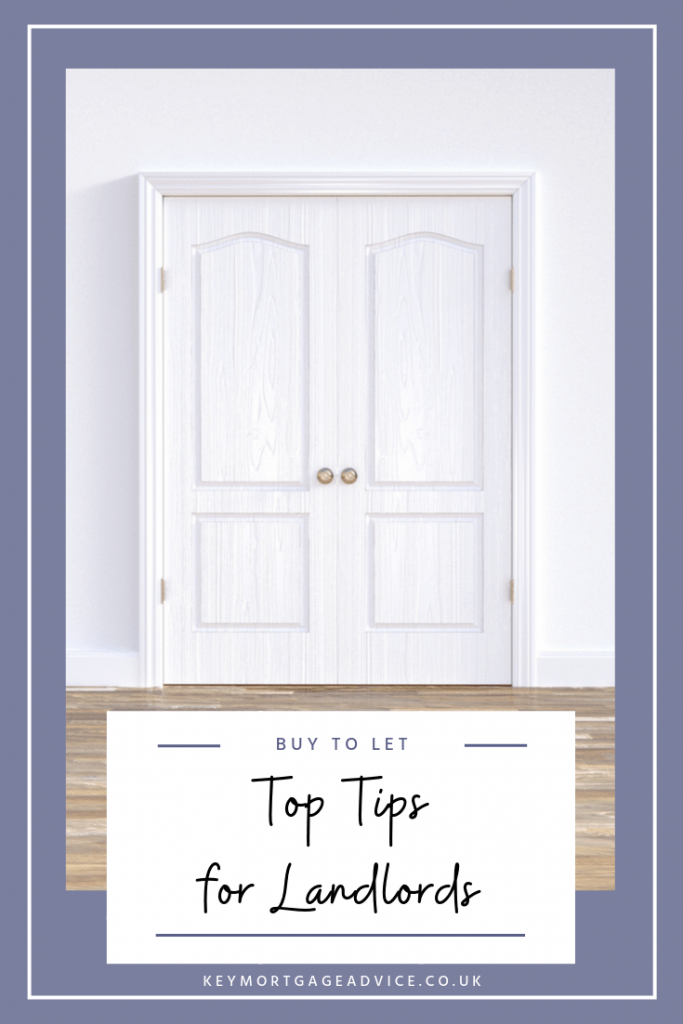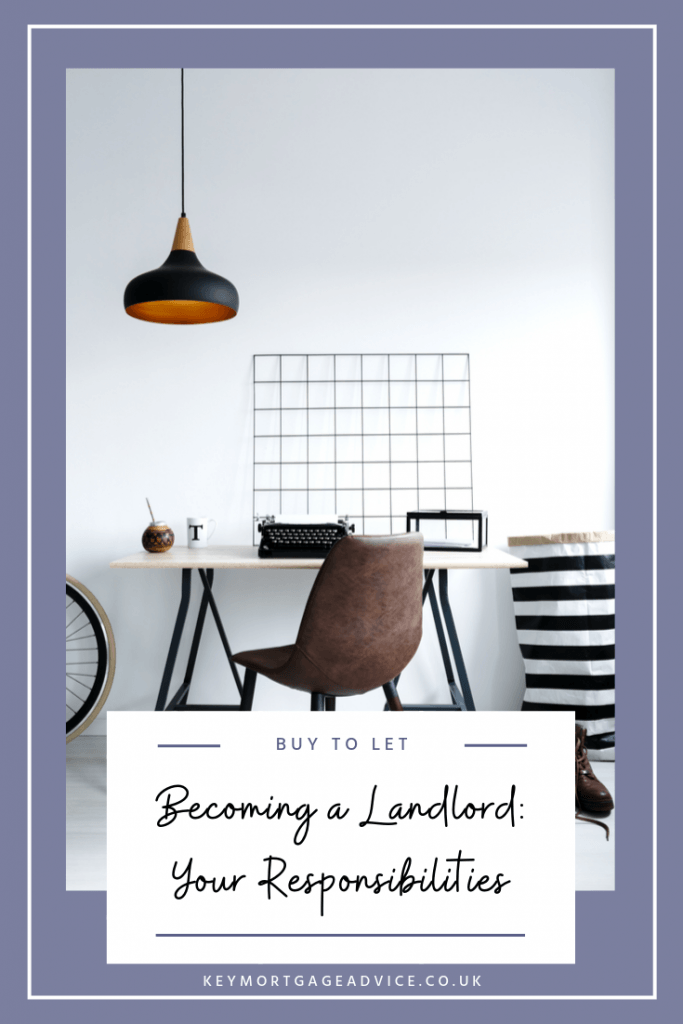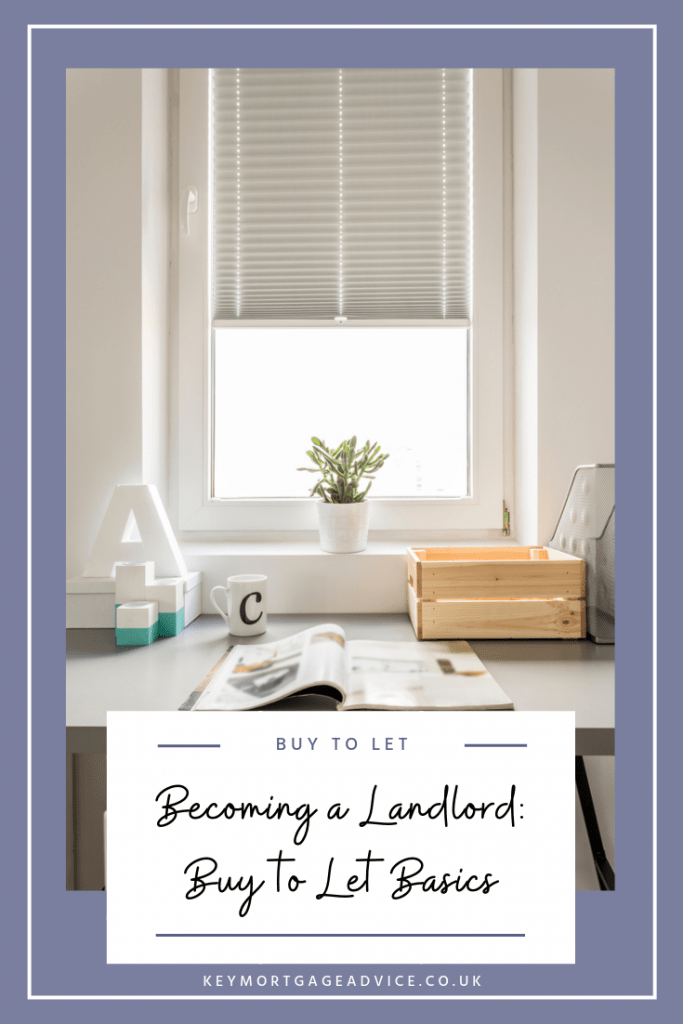Pressure has grown on buy-to-let landlords in recent years, with new legislation meaning that they have more legal obligations than ever before.
If you're thinking of getting into buy to let, you can keep on top of everything by following our simple list of tips for landlords:
First things first, you'll need to check with your local council to see if you need a landlord license. Back in 2006, some areas introduced the licensing process to clamp down on rogue landlords.
You'll also need a license if you plan to rent out individual rooms to 5 or more people in the same property (e.g. student accommodation). These are known as Houses in Multiple Occupation (HMOs) and come with extra responsibilities. You can learn more here.
As of April 2018, any property being let must have a valid Energy Performance Certificate. Your property must also have a minimum EPC rating of 'E'. If you're caught arranging a tenancy without one, you could face a hefty fine and may even be banned from managing your property. This would render you unable to collect rent but still liable for mortgage repayments and maintenance costs.
Make sure your property is up to scratch in terms of its energy performance by following our guide on improving your property's eco-friendly appeal.
Think about the type of person you're trying to attract and get the property ready for them. If you're planning to rent the property as furnished, ensure you choose modern furniture with a wide appeal.
When you're listing your property, focus on promoting its most attractive features - the garden, off-road parking etc. Above all, make sure that it's clean, tidy and safe.
When you're looking for a landlord insurance policy, you'll want to ensure it covers loss of rent, damages, legal expenses and liabilities.
Most standard buildings insurance does not provide the level of protection you’ll need, so it’s worth shopping around for specialist landlord cover. If you don’t tell your buildings insurance provider that you’re renting out your property, your policy won't be valid.
As a landlord, you are required by law to have all gas appliances in the property checked by a Gas Safe registered engineer every year. You must provide your tenant(s) with a Gas Safety Certificate within 28 days of the annual check.
It's also a landlord's responsibility to ensure that smoke alarms are be fitted on every floor of the property and carbon monoxide detectors are in any room where solid fuel (such as wood or charcoal) is used. On the first day of the tenancy, you should test all of the alarms to make sure they're working properly.
You must make sure that your rental property is fit for human habitation. If you violate the Housing Health and Safety Rating System, it is classed as a criminal offence and your tenant(s) could take legal action against you.
A tenancy agreement is not a legal requirement, but having a contract between you and your tenant is crucial - especially when it comes to things like rent arrears. Make sure it's an Assured Shorthold Tenancy Agreement and get a solicitor to help you draw it up.
At present, you could be fined or even face jail if you fail to carry out Right to Rent checks. However, this could change in the future as Right to Rent has been challenged in the High Court.
You should also protect yourself by ensuring that rental applicants are both reliable and responsible. This means checking their credit eligibility and getting references from previous landlords.
You must protect tenants’ deposits safely in a government-accredited scheme within 30 days of receiving it. Once you’ve done that, you need to provide your tenant with the Deposit Protection Certificate and Prescribed Information.
You have a choice of three schemes: Deposit Protection Service, MyDeposits and Tenancy Deposit Scheme.
Since June 1, 2019, the amount of deposit you can take from a tenant is capped at five weeks' rent or six if the rental costs amount to more than £50,000 a year.
It's a good idea to check on the state of your property regularly. If you want to do this, you should stipulate this in the tenancy agreement. It is best practice to give your tenant(s) 48 hours' written notice prior to an inspection.
Remember, it is against the law to enter the property without the tenant's knowledge and consent.
Want to learn more about the landlord life? Head on over to the Buy to Let section of our blog, where you'll find all the information you need!
Ready to take the plunge? Arrange a FREE consultation with one of our team.

So, you've read our Buy to Let Basics and you're serious about becoming a landlord... Great!
Now, you're ready to get down to the nitty-gritty and learn about the responsibilities and tax implications associated with becoming a landlord:
There are certain legal responsibilities tied to becoming a landlord. You need to assure your tenants that their rights are protected via a tenancy contract and that their deposit is safe in your possession.
Tenancy contracts can come in different forms, but most popular by far is an Assured Shorthold Tenancy (AST). This type of contract gives the tenant a legal right to live in the property for a fixed period. They can also be agreed on a rolling term if this suits both parties.
An AST normally lasts for six to twelve months. The contract will detail how much the tenant must pay in rent during that time, who is responsible for repairs, the required notice period upon eviction, when rent can/will be increased, how long the tenancy lasts for, and the tenant's rights in terms of deposit protection.
It is a legal requirement that you provide a deposit protection scheme. You (or your letting agent) will be fined if you don't. There are two types of government-backed scheme, insurance and custodial:
Under an insurance-based scheme, the landlord or agent retains the deposit and pays interest to an insurer. The custodial option (where the deposit is paid directly into the scheme) is free-of-charge to use. Each scheme comes with an independent resolution service, just in case a disagreement arises between landlord and tenant. They are available via the Deposit Protection Service, MyDeposits and Tenancy Deposit Scheme.
These government-backed schemes ensure your tenant will get their deposit back a long as they:
Also known as 'landlord insurance', buy to let insurances provide cover for buildings and contents, as well as landlord liability.
You're required to have buildings insurance in order to secure a mortgage on a property. This covers you in the event that your property is damaged and needs to be repaired or rebuilt.
When applying for buildings insurance, make sure you enter the correct cost to rebuild; this will be different to the amount you bought the property for. If you're not sure, consider hiring a chartered surveyor to value the property for you.
Contents insurance will cover any furniture in the property in case of damage. Even if your property is unfurnished, it's a good idea to get some level of cover. This will protect carpets, curtains, white goods etc. Your tenant will be responsible for insuring their personal property.
Liability insurance covers you in the event that someone is injured whilst on your property. Often, this cover is optional, however, you'll be required to have a minimum level of liability cover if you want to rent to students. Some local authorities also insist on this type of cover.
When it comes to taxes, there are several you will need to pay on your buy to let property:
You'll pay tax on any rent you receive at your relevant tax band. And bear in mind that this new income could push you into a higher tax bracket.
However, some costs can be deducted from the amount of tax you pay. This includes letting agent fees, insurances, council tax and utility bills (if you pay them on the tenant's behalf), and essential maintenance. Landlords letting furnished properties can also claim for damage and repairs to furniture in the property.
To make things more difficult, from April 2020, relief on mortgage interest will be capped for all landlords at the basic rate of 20%, regardless of whether you are a higher rate (40%) or additional rate (45%) taxpayer.
Buy to let property is unfortunately not exempt from Capital Gains Tax. This tax is paid on any increase in value when you come to sell the property. Capital Gains Tax is charged at 18% or 28%, depending on your tax bracket.
However, there are some allowances. This tax year (2019/2020), you won't pay Capital Gains Tax on the first £12,000 you make in profit. For couples with joint assets, this is doubled to £24,000. Stamp Duty and various other fees (solicitors, estate agents etc.) can also be written off against your Capital Gains Tax.
From April 1st 2016, anyone purchasing a property in addition to their main home (including a buy to let property) will pay an additional 3% Stamp Duty for the first £125,000, 5% on the portion between £125,001 and £250,000 and 8% on the amount above £250,001.
The lower threshold for Stamp Duty on additional property is £40,00 - way below the residential threshold of £125,000 - meaning almost everyone will be eligible to pay.
Whether or not you'll want to use a letting agent will depend on your budget and planned level of involvement with the property.
Letting agents can provide services ranging from sourcing and carrying out credit checks on potential tenants, to arranging for a broken boiler to be repaired or chasing up overdue rent payments. They can also arrange for all the mandatory checks (gas safety etc.) to be carried out for you.
The charge for these services will vary from one agent to another, but for a lettings-only agreement, you'll pay around one month's rent. Ongoing property management can start from around 10% of the monthly rental income.
If you're thinking of becoming a landlord, you'll want to make sure you minimise costs as much as possible. Our team of friendly, independent mortgage advisors can help you find the best mortgage deal, usually at no cost to you! Visit our mortgage broker in Southport, Preston or Garstang, or get in touch via phone or email.

If you're thinking of becoming a landlord, there's a lot to get your head around. Luckily, our Southport mortgage broker has put together this handy buy to let guide:
Buy to Let is when a property is bought for the purpose of being rented out, rather than being occupied by the purchaser.
This way, income can be generated for the investor via the rent charged (as long as the rent is more than the repayments on the mortgage). Becoming a landlord as a way to make a living has become increasingly popular over the last few years. There's also potential to make more money when they come to sell, making it an attractive proposition to several different types of investor.
But, as with all investments, buy to let can be risky business; you could be hit by rising interest rates, stuck with difficult tenants or left unable to sell if the housing market changes.
And things are tougher than ever for buy to let landlords, with the introduction of higher stamp duty and new restrictions on the tax relief they can claim.
Most investors can't afford to buy a buy to let property outright, so they have to apply for a mortgage. Loans for buy to let properties are different from standard mortgages, which only apply when you plan to live in the property.
There are several differences between standard mortgages and buy to let mortgages:
Firstly, the deposit on a buy to let mortgage tends to be bigger than those required for a standard loan. Most lenders expect a downpayment of at least 25%, with the very best deals requiring a deposit a big as 40%.
Another big difference is the way affordability is calculated. Instead of using your salary, lenders will use the potential rental income as your primary income source. Some lenders will then consider your personal income as a secondary factor.
Typically, lenders will want the anticipated rental income to be at least 125% of the monthly interest payments on the loan – this figure is known as the 'rental cover'. If the lender wants 125% mortgage cover and the mortgage interest comes to £1,000 a month, you'd need to demonstrate a rental income of £1,250 per month.
However, back in 2017, the Prudential Regulation Authority (PRA) recommended that lenders increase this rental cover to at least 145%. This means you would need to demonstrate a rental income of £1,450 on the same monthly mortgage interest amount of £1,000.
The interest used in the rental cover calculation should be at least 5.5%, according to PRA rules. This is the case even if the rate on the actual mortgage deal is lower.
Lenders also need to account for any 'void' periods, when the property is unoccupied for a period of time. A lender will want to know that you can meet the mortgage repayments during these times.
Buy to let mortgages with the lowest interest rates tend to come with the biggest upfront fees. For example, a market-leading fixed rate could easily come with upfront fees up to £2,000. You can lump the fees in with the loan, but this means paying interest on them as well.
This makes it important to consider the interest rate against any fees when taking on a buy-to-let mortgage. Sometimes, a higher interest rate can actually work out cheaper.
Finding the right property is important when searching for your own home, but it's equally important when looking for a buy to let property. Before you start your search, think about the kind of tenant you want to target.
For example, students are likely to want an affordable property close to the university and nightlife, while families will often be looking for somewhere close to good schools, with a garden.
Keep in mind that some properties can be difficult to secure a mortgage on. These include former council houses, new developments, and flats above commercial premises (such as shops).
If you're just starting out in buy to let, getting a property close to home might be a good idea. That way, you'll be familiar with the area and on-hand should anything go wrong.
However, you might be planning to use a letting agent. In which case, you'll have a wider range of options and could look further afield.
When you've decided on the area you want to buy in, speak to local letting agents. They can inform you about the kinds of property in demand and how much they rent for.
When you're becoming a landlord, the type of tenant you're looking to attract can have more of an impact than you think. Some lenders place restrictions on mortgages for student lets and Houses in Multiple Occupation (HMOs), for example.
So, if you're looking to rent separate rooms within your property to maximise your income, you may have to spend some extra time researching specialist mortgages.
Now that you understand the basics, get to grips with the more complicated side in the next part - Becoming a Landlord: Your Responsibilities.
Don't have time to do hours of research on becoming a landlord? Then speak to one of our friendly, independent mortgage advisors. They know the ins and outs of buy to let, and can help you plan your new venture. We have mortgage brokers in Southport, Preston and Garstang - you can find all our contact details here.

If you're thinking of becoming a landlord, there's a lot to get your head around. You'll need to consider property prices, taxes and tenancies before you know if it's the right step for you.
So, before you commit to anything, let's have a look at the pros and cons of purchasing buy to let property in 2019:
At the time of writing, data from Zoopla shows that average property values are 43% higher than they were 10 years ago and an incredible 235% higher than this time 20 years ago. Of course, the property market does fluctuate, but this data shows the potential for great returns over time.
Some areas could see good short-term growth too, with cities in the north-west seeing an average property price increase of 4.9% in the 12 months to January 2019, according to Zoopla's Cities House Price Index.
Just 40% of those in London will own their home by 2025, according to PwC - down 20% from 2000. This means that more people will be looking to rent a property over time, and with increasing demand comes increasing prices.
Most lenders now require rental cover of 145% and tax relief on mortgage interest will be capped at the basic rate of 20% for all landlords from April 2020.
Insurance Premium Tax (IPT) rates now stand at 12%, up 2% from previous levels. This tax is payable on all general insurance policies (including buildings insurance), for which landlords are responsible.
Lettings agency fees are to be banned from June 1st, 2019, so landlords will need to find other ways of meeting costs like credit reference checks and inventories.
Landlords starting new tenancies now have to have an Energy Performance Certificate (EPC) with a minimum rating of E. This will come into effect for existing tenancies from April 2020.
Since April 2016, if you’re buying a property that is not replacing your main residence – such as a buy to let property – there's an extra 3% on your stamp duty bill.
Unlike regular stamp duty, this extra 3% is charged as a flat rate on the entire cost of the property. This would mean you pay an extra £6,000 on a £200,000 home!
Since 2016, rental growth in some areas (particularly the south-east) has been wanting, and in London, there has been negative growth in this time.
Taking up a new challenge on your own can seem daunting, but don't worry, Key Mortgage Advice are here to help! If you're looking to purchase a buy to let property, we can help you find the best mortgage deal from the thousands available on the market. Get in touch today to arrange a free, no-obligation consultation.

As people become increasingly aware of their environmental impact, making your rental property more environmentally friendly can give your profits a real boost and help attract tenants.
In April 2018, a new legislation - the Minimum Energy Efficiency Standards (MEES) - came into effect, requiring every residential rental property to have an EPC rating of E or better. It is estimated that some 30,000 rental properties across the country were immediately affected by the changes.
According to the new regulations, landlords of properties with an EPC rating below an E cannot grant a new tenancy, nor renew an existing one, unless they have registered an exemption. These rules will apply to all tenancies by April 2020.
Although some landlords will see these new regulations as a hindrance, they offer an opportunity to give tenants what they really want; not only does an eco-friendly approach help save on fuel costs, it can provide greater convenience and give your rental properties a unique selling point. So, if you’re looking to boost the green credentials of your property, follow these minimum-fuss, maximum-impact tips:
High-quality insulation is the first step to creating an eco-friendly living space. Ensuring that heat lost via lofts and wall cavities is kept to a minimum will have an immediate and lasting effect on fuel costs, reducing them drastically.
Whilst original fireplaces make attractive features, leaving them unmanaged will have a significant impact on your property's energy efficiency and could undo your hard work in other areas. If the fireplace is unused, fitting a chimney balloon is the simplest solution. The balloon is inserted up the chimney and inflated, blocking draughts and stopping heat from escaping. They are also easy to remove, should you want to call the fireplace into action again at any point.
Swapping your lightbulbs for LED alternatives is one of the cheapest and easiest switches you can make. LED bulbs can last up to 21-times as long as traditional ones and are even more efficient than the CFL bulbs used in most homes.
With the average power shower using around 22 litres of water per minute, despite being desirable for tenants, they're not particularly eco-friendly! Provided the water pressure in your area is good, a water-saving shower head should have a minimal impact on your shower's effectiveness whilst making water wastage a thing of the past.
Every flush of the toilet uses up to 12 litres of water, a scary proposition when you consider how many times an average family uses the toilet per day! The old brick-in-the-cistern trick might be appropriate for residential homeowners, but it might be a good idea to fit a proper low-flush toilet in your investment property!
Thermostatic valves shut off radiators when they reach the desired temperature. Fitting the valves is easy and relatively cheap (each valve costs between £10 and £20) and can make a huge difference to the fuel efficiency of your property. They are an affordable alternative to the increasingly-popular underfloor heating option, which can be very costly.
Smart thermostats, like the popular HIVE designed by British Gas, allow tenants to control the property's heating remotely. Meaning they can come back to a warm house on a winter evening without leaving the radiators on all day. They are an ideal solution in terms of preventing energy waste and saving money, and they relatively inexpensive to fit.
Your Energy Performance Certificate is the document showcasing your property's energy efficiency credentials, so make sure you have it updated and make your hard work count! An EPC lasts ten years, so you may not need to have a new assessment legally, but an old rating will mask the changes you have made. Ensure you show the assessor the paperwork detailing the work you've had done and allow them access to any areas where changes have been made (loft etc.) so they can effectively assess your property.
Once your existing portfolio is up to scratch, you might like to think about expanding and buying another property. Before you do, get in touch with us so we can help find you the best possible mortgage deal!
Our Facebook is growing every day (thank you!)
To save time and make it easier for you to find out if we can help with what you're looking for, we thought we'd list our services in a handy little blog!
For our new followers, keep reading to find out how Key Mortgage Advice can help you with finding the best possible deal, whatever your needs and circumstances:
Whether you’re looking for your first or fifth property, we can help you get the right mortgage. Every lender has a unique set of policies and criteria, which must exactly match the circumstances of the borrower. Therefore, arranging a mortgage has never been more complex. Our wealth of experience and knowledge of the underwriting criteria for each individual lender allows us to successfully direct applications and complete on over 95% of all mortgage cases. We have access to the whole market of mortgage products, meaning we are truly independent and will help guide you to the most competitive and suitable mortgage product for your circumstances.
Many lenders now offer discounted interest rate deals for an introductory period – normally for two, three or five years. At the end of the introductory period, they’ll usually revert to a higher rate. However, that doesn’t mean you have to stick with the higher rate; like most things nowadays it is important to shop around to see if you can save some money. If you want to know more about how we can help you to save money on your monthly mortgage payments, or to swap to a better interest rate, then contact us and we’ll see if we can get you a better deal.
If you’re a homeowner, you may have seen the value in your home increase over time. Lifetime Mortgages allow you to tap into some of this value and release a cash sum. A lifetime mortgage is designed for people over the age of 55 and allows clients to either buy a new home or release money from their current property without the need to make any monthly repayments during the lifetime of the loan. This is because the loan and interest are rolled up and repaid by the sale of your property when the plan ends; this is normally when you die or move into long-term care.
In many cases, we can visit you in your own home or, if you prefer, we can provide a telephone consultation. If you wish to proceed with a recommendation, we offer full support with the mortgage application, legal forms and completion matters to ensure the process is as straightforward as possible. In addition, we will offer you our full support going forward, should you require any further advice.
Buy-to-let mortgages are specifically designed for investors who want to buy a property and rent it out. These are usually more expensive than normal mortgages, but they could help you to become a property investor. If you don’t own your own home outright, or with a mortgage, finding a buy-to-let mortgage may be difficult.
Most buy-to-let mortgages are interest-only, meaning that you won’t be paying off the mortgage itself and you’ll have to pay the outstanding capital at the end of the mortgage term. The other key differences from normal mortgages include:
However, any rental income you earn from a property can be offset for tax purposes against the interest only mortgage payment, so owning buy-to-let properties can be a tax-efficient investment product.
Since March 2016, buy-to-let mortgages have come under greater scrutiny. New affordability tests were implemented which mean that older home-owners may struggle to get a buy-to-let mortgage as lenders often require borrowers to repay the whole loan back before they retire.
Obtaining a commercial mortgage relies heavily on the attractiveness of the proposition to a lender. Therefore, the involvement of an experienced and well-connected advisor is hugely important. As independent specialists, we negotiate business mortgages with a range of lenders including major banks, commercial building societies, regional and local building societies, and specialist commercial asset lenders. The appropriate commercial lender is purposefully selected to meet your needs. Terms for business mortgages are not set in stone and our role in the transaction is to negotiate the best mortgage rate and terms. Our wealth of experience and market knowledge means we understand what is likely to be achieved given a specific set of circumstances. We are able to assist with transactions for purchasing premises to trade from or for investment opportunities for commercial landlords.
In addition to the services listed above, we can also assist and advise on a whole host of other products, including:
If you need expert advice on any of the above, click the button below and book a free consultation with one of our expert advisors: